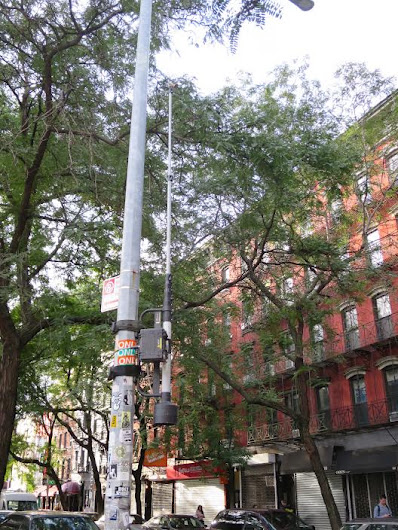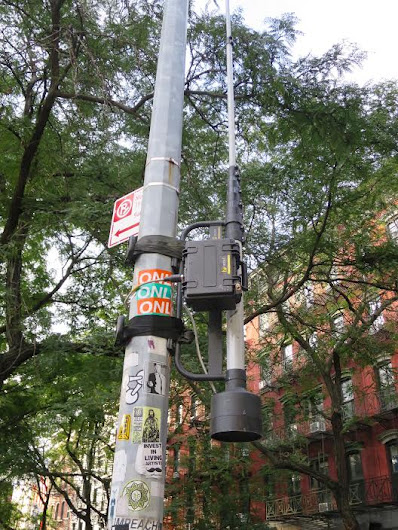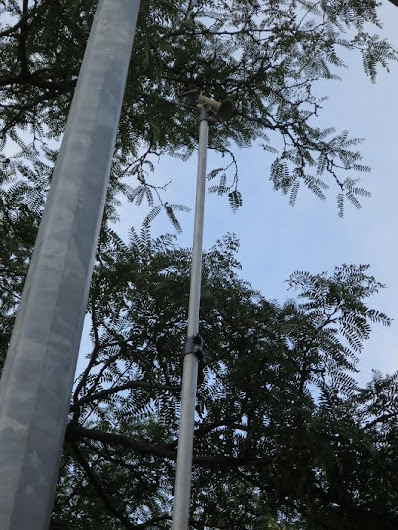
[Click to go big]
Here's this week's NY See, East Village-based illustrator Grant Shaffer's comic series — an observational sketch diary of things that he sees and hears around the neighborhood.



1) Hot food item not held at or above 140º F.
2) Cold food item held above 41º F (smoked fish and reduced oxygen packaged foods above 38 ºF) except during necessary preparation.
3) Raw, cooked or prepared food is adulterated, contaminated, cross-contaminated, or not discarded in accordance with HACCP plan.
4) Food contact surface not properly washed, rinsed and sanitized after each use and following any activity when contamination may have occurred.
In 1982, Dojo took over the space next door and expanded even more. Then in 1991, Dojo in the West Village was created – both Dojo East and Dojo West were favorite local gems. Unfortunately in 2007, Dojo East was closed down due to high rent. BUT Dojo West is still going strong!




Please join us to discuss creating a passive recreation space at the DEP shaft site on East Fourth Street
Monday, Oct. 1:
6:30 p.m. — Meet first to see the DEP shaft site
7 p.m. — Scope meeting at JASA Green Residence, 200 E. Fifth St. at the Bowery
This project was funded by Mayor de Blasio and former Council Member Rosie Mendez, and is supported by Council Member Carlina Rivera.
NYC Parks is starting the design process for this project by holding a scope meeting, in which local residents and stakeholders to learn about the opportunities at the site and provide feedback. With this input, we will develop a design to be presented to Community Board 2 for public review.







Tenants from the Lead Dust Free NYC (LDFNYC) coalition are releasing a series of photos showing the faces of lead dust contamination. As elected officials focus more on the issue of lead in NYC housing, LDFNYC urges them to crack down on landlords who contaminate buildings with lead during construction.
Lead contamination arising from unchecked construction dust has hit Lower East Side (LES) tenants hard over the last five years. Landlords like Samy Mahfar, Steve Croman, Raphael Toledano, and Icon Realty have all exposed tenants to lead through this form of contamination. In response, LES tenants have formed this campaign and assembled these photos of themselves to highlight the extreme lead exposure they have faced through construction dust in their buildings.
While tenants applaud new legislative efforts to stop lead poisoning, they want to also bring attention to the lax enforcement of existing laws. NYC’s predominant lead law is Local Law One of 2004. It was enacted fourteen years ago and many aspects of the law, which would help protect tenants from lead laden construction dust, are simply not being enforced.
"We have had multiple lead violations at 514 E. 12th St. The last violation placed found lead dust at four times the EPA standard. I do not believe Local Law One is enforced," said Holly Slayton, a longtime East Village resident whose doctor advised her and her daughter to wear face masks in their own home during renovations in their building (pictured above). "I had to call city agencies continually to get the dust tested and the landlord to follow the proper Local Law One protocol."
In 1960, New York City was one of the first municipalities to ban the use of lead paint. In 2004, Local Law 1 set a goal for the City to eliminate lead in all residential buildings by 2010. Eight years past that deadline, it is clear that there is still more work to be done.
Under current law, landlords must perform annual checks for lead-based paint hazards in multiple dwellings built before 1960 with units that house children under 6 years old. Landlords must also perform a check whenever an apartment becomes vacant. To remediate the problem, landlords often paint over the lead paint surface. Because paint is susceptible to chipping or fading, this only creates a temporary solution to the presence of lead.
Intro 873 pushes for a permanent solution by requiring landlords to permanently remove or encapsulate any lead paint once a unit becomes vacant.
Intro 874 would increase inter-agency coordination when construction work blows lead particles into residential units and common areas, and also allow the City to issue a stop work order if a unit has received a notice of a lead-based paint hazard.
These two bills, sponsored by Chin, were introduced as part of a legislative package of 23 bills to expand the City’s oversight over lead paint, decrease the threshold for elevated blood lead levels that trigger investigation, improve inter-agency coordination and call for reporting to assess the impact and effectiveness of the City’s lead prevention measures.



























